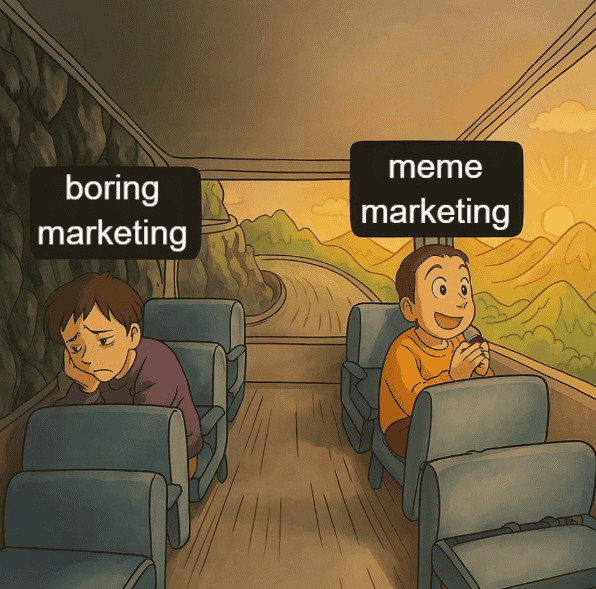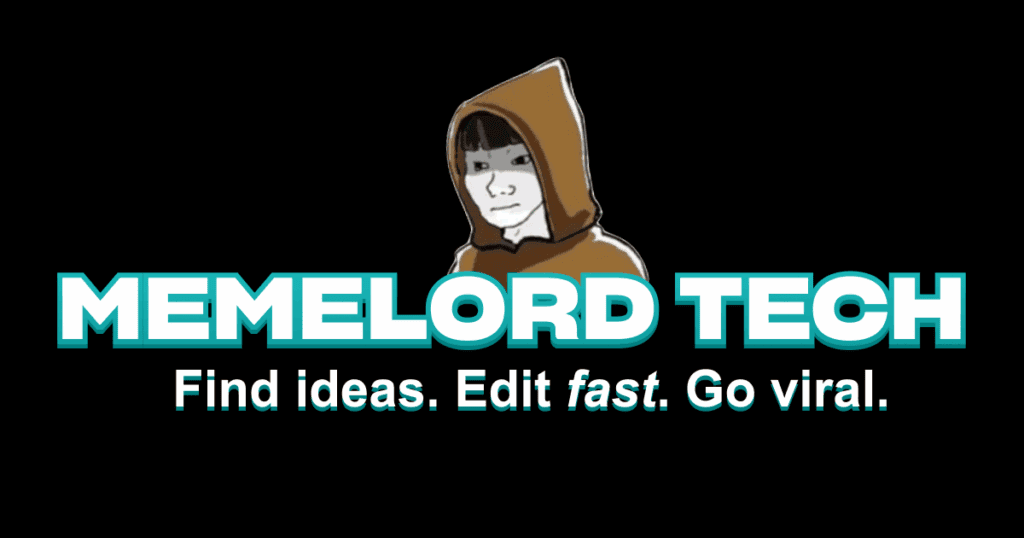You’ve seen them everywhere, right? Internet memes are those funny pics with text that pop up all over social media….
Memes are a huge part of online culture, and clever businesses have been using them in their marketing for well over a decade. This strategy is called meme marketing, and it’s shaking things up in digital marketing.
Think about the last time a meme made you laugh or you decided to share memes with a friend. It probably felt relatable and maybe even brightened your day a little.
Good meme marketing taps into that feeling, helping brands connect with people on a more personal level. It’s about understanding internet culture and speaking the internet’s language.
But using popular memes isn’t just about getting a quick chuckle. It’s a viable marketing strategy!
An effective meme can significantly boost your brand’s visibility and make you seem more human, helping to drive engagement by standing out from the boring corporate crowd.
That’s how I doubled my personal LinkedIn network (+300 followers) in just a few months on the back of poking fun at controversial topics and utter nonsense. I still haven’t been canceled, so I’m calling it jester’s privilege.
Why would I take the gamble?
Research shows that meme marketing enhances brand recall and engagement rates.
Let’s explore how you can leverage memes and make meme marketing work for your business’s marketing campaigns (without pissing everyone off).
What Exactly is Meme Marketing?
Meme marketing is the practice of using internet memes to promote a brand or product. This usually happens on social media platforms like Instagram, X, Facebook, or even LinkedIn sometimes as part of a social media marketing plan.
The goal is to leverage the humor and relatability of existing popular meme formats or create new memes that align with your brand’s message.
The term ‘meme’ itself was coined by biologist Richard Dawkins in his 1976 book, The Selfish Gene, while explaining the spread of ideas and cultural nuance. Dawkins described how ideas could spread and mutate like genes. Internet memes function similarly, spreading rapidly online as shared cultural touchstones, often in the form of viral images or jokes.
Why does this work so well as a marketing tactic?
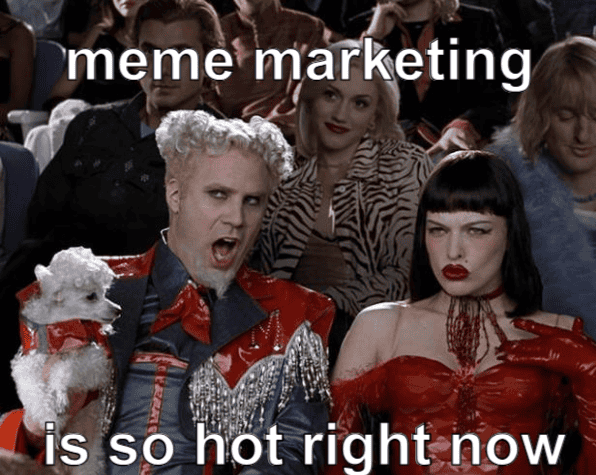
Because memes are inherently shareable and tap into shared cultural moments or feelings.
Memes typically convey funny messages, irony, or relatable everyday situations, making them easy for audiences to understand and connect with. They’re typically short, perfect for today’s ever-shortening attention spans.
It’s less like traditional advertising and more like joining a conversation people are already having, making the promotional content feel more organic. This approach makes people more receptive to the underlying brand communication.
And I can tell you from experience, marketing by creating real connections is all the rage right now, especially with the younger generations.
Why Businesses Are Jumping on the Meme Marketing Bandwagon
There are solid reasons why so many companies are incorporating memes into their marketing strategy. Meme marketing offers some powerful advantages over older advertising methods, especially when targeting a younger demographic.
Let’s look at a few key benefits that come with using memes in your content.
Building Brand Personality
Memes let you show off your brand’s lighter side and develop a distinct voice. You can step away from formal corporate speak and adopt a more casual, witty tone that resonates with internet culture. This makes your brand feel more approachable and human, fostering a stronger connection.
Showing you understand pop culture and don’t take yourself too seriously can really appeal to your target audience if it’s done right. It builds a relationship beyond products and services; people start to feel like your brand ‘gets’ them on a personal level. This can even extend to how your customer service team interacts online.
Viral Potential (The Absolute Dream.)
Every marketer dreams of content going viral, spreading like wildfire across the internet and generating buzz faster than a sledgehammer busting through old drywall.
Memes are built for sharing. Whether it be a repost to the same social network, another website, or even a text message to an old friend, their humorous nature encourages people to hit that share button, amplifying your reach exponentially.
While you can’t guarantee virality for every marketing meme you create, using trending or popular meme formats increases your chances of getting seen by a much wider audience. One well-executed meme, timed perfectly with current events or sentiments, can generate massive organic reach.
This organic reach is often far greater and more impactful than what you could achieve with a similar spend on paid advertising and other marketing campaigns.
Cost-Effective Content Marketing
Creating memes is often much cheaper than producing high-quality videos or elaborate marketing campaigns.
Many successful memes rely on simple image templates (a readily available meme template often works best) and clever text captions.
This makes meme marketing accessible even for businesses with smaller budgets, positioning it as an efficient marketing tool among a sea of professional (and not so professional) offers.
You don’t need fancy equipment or a huge production team. Some basic graphic design skills or even free meme generator tools can suffice.
Sometimes, the most effective memes are the simplest ones featuring recognizable image with a relatable caption. This low barrier to entry makes meme marketing a very appealing option for brands looking for high-impact, low-cost content marketing tactics.
Over time, you can build up a marketing library of templates and ideas so that you never run out of content to post.
Getting Started with Meme Marketing (Without Looking Out of Touch)
Okay, so you’re interested, but maybe a little worried about looking silly or getting it wrong?
That’s a valid concern when creating memes. I’ve fallen flat on my face online enough to know what it feels like. Using memes incorrectly can backfire spectacularly and make your brand seem like it’s trying too hard, potentially damaging your credibility.
It’s a good thing I’m here so you can learn from my mistakes!
The foundation of successful meme marketing is authenticity and understanding the nuances of meme culture. You don’t want to be the parent trying awkwardly to use teen slang… the same principle applies to brands using memes.
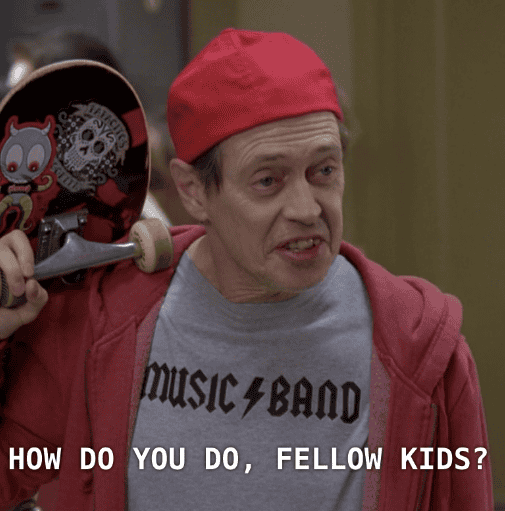
Here’s how to start off on the right foot and leverage memes effectively.
Understand Your Audience
Who are you trying to reach with your marketing memes? What kind of humor do they appreciate? What platforms do they frequent?
The memes that work wonders on TikTok might fall completely flat or even be perceived as unprofessional on LinkedIn.
Think deeply about your target audience’s demographics (age, location), interests, online behavior, and the specific cultural references they understand. Look at what kind of content, especially funny images or internet jokes, they already engage with and share.
This research is fundamental as it should help you make memes that will actually connect and drive engagement rather than alienate or confuse.
Understanding your audience’s short attention spans is also crucial. Don’t get caught up writing a whole ass chapter of a book in 1 meme. Go for 1-2 sentences MAX.
Know Your Memes
Before you use a meme, make sure you understand its origin, common usage, typical meaning, and evolution. Some memes have subtle contexts, complex histories, or connotations that could be problematic or offensive.
Using a meme incorrectly is a quick way to signal you’re out of touch with internet culture and that’s a one way ticket to undermining your marketing efforts.
Websites like Know Your Meme are invaluable resources for researching a meme’s background, typical format, and common interpretations. Pay attention to different meme format variations – images with top/bottom text, re-usable templates, absurdist humor, etc.
Each format often has its own unwritten rules and tone, so don’t get caught looking like an out of touch meanie and try to understand what you’re posting. But don’t worry, even veterans like me get it horribly wrong sometimes. It just comes with the territory.
Timing is Everything
Most memes have notoriously short lifecycles because internet culture moves incredibly fast. What’s hilarious and trending today might be considered cringe next week.
Using an outdated meme is another common pitfall that makes your brand look slow and disconnected from the digital conversation of the day. The only really good way to avoid looking like an ass is to stay current by monitoring social media trends on platforms relevant to your target audience.
But also, don’t feel pressured to jump on every single trending meme the moment it appears. It’s often better to use a slightly older, well-understood meme correctly and relevantly than to rush into using a brand new one you don’t fully grasp, risking misinterpretation.
Sometimes, evergreen relatable memes focusing on universal experiences (like Monday mornings or coffee addiction) are safer and more consistently effective bets.
Stay Authentic
Don’t force it!
If a particular meme format or trend doesn’t genuinely fit your brand’s voice, values, or message, simply skip it.
Trying to shoehorn your product or brand’s message into a completely unrelated or inappropriate meme often feels awkward, overly promotional, and inauthentic – the opposite of what meme marketing aims to achieve.
Memes land best when they’re organically grown and distributed. Think about your core brand identity and personality. As a small business owner, YOU are probably the core brand identity and personality.
Choose or create memes that align naturally with how you want to be perceived. Consistency is important too. Your audience should feel the meme fits who you are as a brand, rather than being a jarring departure designed just to chase trends (that’s me, I chase trends for internet clout 😂).
An effective meme should complement your overall marketing messages as an extension of yourself.
What I’m saying is, be yourself, but don’t be so over the top that you miss out on customers over it.
Finding the Right Memes for Your Brand
Knowing the principles is one thing, but finding or creating the actual marketing memes is the next practical step. Where do you look for inspiration? How do you adapt existing formats or generate original ideas that resonate? Here are some approaches for incorporating memes successfully.
Use Meme Generators and Templates
You don’t always need to start from scratch when creating meme content. There are many online meme generator websites and apps that provide libraries of popular meme template options.
You simply select a template (often a recognizable funny image or drawing) and add your own relevant text captions. Tools like Imgflip, Kapwing, or Canva’s meme generator make it easy to quickly create content based on trending or classic formats.
Just search for “meme generator” to find various options suitable for your marketing toolkit. Remember to customize the text thoughtfully to fit your brand, your specific marketing campaign goals, and your target audience’s sense of humor.
And if you want a high end solution that does really handy stuff like background removal, I highly recommend Memelord Technologies.
That’s where I create 98% of my memes, including this banger.
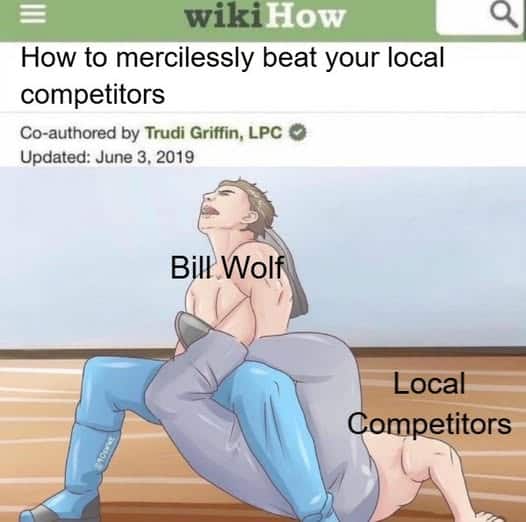
Monitor Social Media Trends
Keep a close eye on the platforms where memes thrive and where your target audience spends their time.
X, TikTok, Reddit (especially meme-focused subreddits like r/memes or niche communities relevant to your target audience), and Instagram are hotspots for meme culture.
See what’s currently popular, what formats are gaining traction, and what kind of content resonates most (look at likes, shares, and comments).
Look for specific meme formats, recurring themes, or popular cultural references that you could potentially adapt for your own messaging.
Watching what gets shared widely and gets a tons of comments is the best thing you can do. You’ll start to notice patterns, popular styles, and opportunities to participate relevantly. This is a key part of effective social media marketing.
Create Original Memes (Carefully)
Adapting existing, popular meme formats is usually the safer and easier route, as the audience already understands the context. However, you can also try creating completely original memes featuring your product, mascot, unique brand situation, or industry-specific humor.
Creating your own original memes is inherently riskier because it relies entirely on your own creativity, understanding of meme culture, and ability to generate genuinely funny or relatable content from scratch.
If you decide to create original memes, test them internally first with your closest customers who understand internet culture. Make sure the humor lands as intended and the brand’s message is clear and not forced.
An original meme that hits the mark can be incredibly powerful and memorable, but a miss can be quite awkward or fall completely flat, wasting effort and potentially making you or your company look dumb.
Sometimes a simple funny image with clever text is all that’s needed.
Potential Pitfalls of Meme Marketing (And How to Dodge Them)
While meme marketing offers great rewards and can effectively drive engagement, it also comes with significant risks. A poorly executed meme or misunderstood meme format can do more harm than good if it’s found to be offensive or otherwise damages your reputation.
Awareness of these common traps is the first step to avoiding them in your marketing efforts.
It’s also worth noting that I’ve used myself as a guineu pig to experiment with what people enjoy on the internet. This isn’t a new concept for me, and I’ve been known to tell clients to tone it down, which is hilariously ironic coming from me.
Let Bill’s experience be a lesson to you.
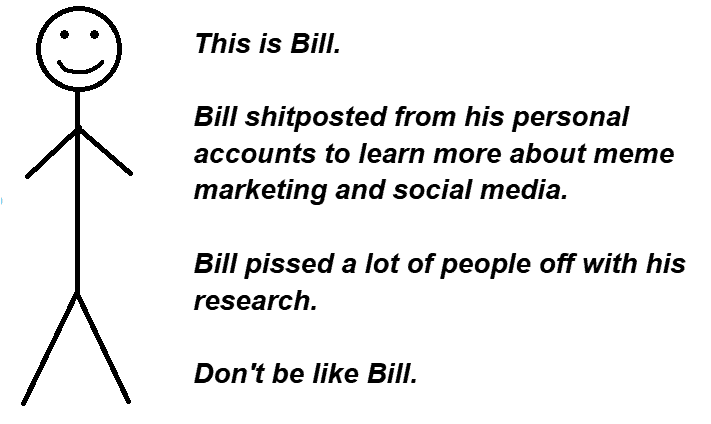
Misinterpreting a Meme
This happens frequently when a brand uses a meme format without fully understanding its typical context, cultural references, or underlying connotations.
What seems like an innocently funny image or phrase might be associated with something negative, controversial, or completely unrelated to your intended message.
Always do thorough research on a meme’s meaning and common usage before incorporating memes into your marketing campaign. Imagine using a meme often associated with complaining or failure to announce positive company news – it sends confusing and inappropriate signals.
Check reliable resources like Know Your Meme. If you’re still unsure, ask your colleagues or customers who are more immersed in internet culture for their interpretation before posting. Double-checking avoids embarrassing missteps.
Using Outdated Memes
The internet moves at lightning speed, and meme trends are fleeting.
Using a meme format that peaked months or even years ago instantly makes your brand look slow, disconnected, and out of touch. That “One Does Not Simply” meme might feel like a timeless classic to you, but to younger segments of your target audience, it’s ancient history and signals a lack of current cultural awareness.
Memes cut through clutter because they feel current. So you should always strive to stay reasonably current with meme trends relevant to your audience, but again, don’t feel obligated to chase every fleeting fad. It’s a delicate balance.
A well-chosen, slightly older but still widely recognized and relevant meme used correctly is generally better than an embarrassingly outdated one or a misused new one. Consistency in tone matters more than always being cutting-edge.
Take your time and stay on the cutting edge with meme technology!
Being Offensive or Insensitive
This is perhaps the biggest danger in meme marketing. Memes often rely on edgy humor, satire, irony, or specific cultural references that can be easily misinterpreted or cross lines if not handled carefully.
It’s incredibly easy to accidentally cause offense by touching on sensitive topics, reinforcing harmful stereotypes, making light of tragic events, or using humor that alienates parts of your audience.
Avoid creating or sharing memes related to politics, religion, tragedies, social justice issues, or potentially discriminatory themes unless you are absolutely certain it aligns with your values and audience expectations.
Always consider how different groups might perceive your meme. Having a diverse team review meme ideas before publishing is a smart move to catch potential issues and ensure cultural sensitivity. A failed attempt at humor can seriously damage brand perception.
Even if you think a controversial meme is going to land well, you need to consider the long term implications. Once you post something, it has the potential to live on forever.
Legal Issues and Copyright
Meme culture thrives on remixing and repurposing existing content, often including copyrighted images, characters, movie stills, or celebrity photos.
Not Legal Advice
While this is often tolerated under the principles of “fair use” in casual online sharing among individuals, the legal landscape is different when a brand uses such material for commercial purposes like marketing.
Using someone else’s photograph, artwork, or likeness in your marketing meme without permission could lead to copyright infringement claims or lawsuits. To stay safe, stick to using established meme templates that rely on royalty-free images, drawings, or formats where the visual itself isn’t the primary copyrighted element.
Consult official guidelines on fair use or seek legal counsel if you have doubts about using specific imagery, especially recognizable characters or people. Creating your own visuals inspired by meme formats, or using meme generator tools that provide licensed templates, is generally a safer approach for commercial marketing campaigns.
Don’t let funny images lead to legal trouble.
You should consult a licensed attorney in your state to help you understand the legalities of copyright infringement.
Measuring the Success of Your Meme Marketing Efforts
How do you know if your carefully crafted marketing memes are actually working and contributing to your goals?
Like any marketing tactic, you need to track its performance and impact. However, the key metrics for meme marketing are going to differ drastically from traditional marketing campaigns focused purely on lead generation or direct sales.
Key Metrics to Watch
Focus heavily on engagement metrics. Likes, shares, comments, and saves are strong indicators that your meme resonated deeply with the target audience and sparked conversation.
High share counts are particularly valuable, as they signify strong approval and contribute directly to organic reach – people liked it enough to broadcast it to their own networks. Sharing memes is a powerful endorsement.
Also, track reach and impressions to understand how many people saw your meme content. Look for correlations between posting successful memes and increases in profile visits, follower growth, or brand mentions across social media.
While direct attribution can be incredibly time consuming (if not impossible), you might even see a lift in website traffic or specific landing page visits if the meme included a subtle call-to-action, link in bio reference, or was part of a larger, integrated marketing campaign. You can also monitor how memes feel to your audience through comment sentiment analysis.
The absolute best metric in my experience has been direct feedback from clients and prospects. When somebody brings up one of your memes positively in conversation, that’s means you probably hit the mark.
Don’t Expect Direct Sales
Meme marketing is primarily a top-of-funnel and mid-funnel activity focused on brand building, increasing visibility, fostering engagement, and humanizing your brand. It’s usually not a direct sales driver or a primary lead generation tactic in itself, although it can contribute indirectly.
Don’t get discouraged if your hilarious, viral-quality meme doesn’t immediately translate into dozens of inquiries. That’s rarely the main goal.
Think of meme marketing as building brand awareness, positive association, and community. The aim is to make people like, remember, and talk about your company in a positive way.
Positive vibes and increased visibility can significantly influence purchase decisions later on, making potential customers more receptive to your other marketing messages, including email marketing or ad retargeting campaigns.
Meme Marketing Final Thoughts and Next Steps
Meme marketing can be an incredibly effective marketing tool for connecting with your audience. It allows brands to showcase their personality, boost engagement, and achieve substantial reach, often at a remarkably low cost compared to traditional advertising.
It’s all about skillfully speaking the language of the internet, understanding pop culture, and joining relevant cultural conversations authentically. Using memes typically conveys relatable humor.
But successful meme marketing requires care, cultural awareness, and a strategic approach. Knowing your target audience intimately, thoroughly understanding meme context and cultural references, staying authentic, and being acutely mindful of potential pitfalls like offensiveness or legal issues are absolutely crucial.
Successful memes aren’t just about being funny… they’re about being smart, relevant, timely, and genuinely engaging as part of a cohesive marketing strategy.
When executed well, meme marketing can be a powerful asset in your marketing arsenal.
Remember, you can’t please everyone. But you can please the people who would want to buy from you.
Check out Memelord Technologies if you want to get serious about producing memes at the speed of culture!
